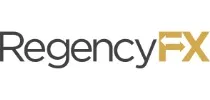June 2025 Update On Foreign Exchange Markets

Regency FX give their monthly update on developments in the foreign exchange markets. June 2025 marked a significant period for major currency pairs, with the foreign exchange market continuing to navigate complex geopolitical developments, monetary policy divergences, and seasonal trading patterns. The month saw notable movements across GBP, EUR, and USD pairs, driven by central bank policy expectations, economic data releases, and ongoing trade tensions.
EUR/USD Performance
The euro demonstrated relative strength against the dollar in June 2025, building on momentum from earlier in the year. The EUR/USD pair maintained its position near three-year highs, with the currency benefiting from positive seasonal patterns that have historically favoured the euro in June. The pair showed resilience despite ongoing uncertainties in global trade policy, with technical resistance levels in the mid-1.15s becoming a key focus for market participants.
European Central Bank policy expectations continued to influence euro movements, with market participants closely monitoring inflation data and economic indicators across the eurozone. The euro’s performance reflected broader confidence in the European economic outlook, though traders remained cautious about potential volatility from external factors.
GBP/USD Dynamics
The British pound faced headwinds in June 2025, consistent with historical seasonal patterns that typically show weakness for sterling during this period. Despite reaching three-year highs near 1.3600 earlier in the trading cycle, GBP/USD experienced some consolidation as seasonal factors exerted downward pressure.
The pound’s performance was influenced by domestic economic conditions an the Bank nk of England policy stance, with market participants closely watching key support levels around the 50-day exponential moving average near 1.3225. Brexit-related developments and UK economic data continued to provide directional cues for sterling traders.
USD Performance and Cross-Currency Impacts
The US dollar faced mixed performance across major currency pairs in June 2025, with its strength varying depending on the specific cross-currency dynamics. Against the Japanese yen, the dollar showed modest weakness, consistent with seasonal patterns that typically favour yen strength in June.
Federal Reserve policy expectations played a crucial role in dollar movements, with market participants analysing potential rate cut scenarios. Some forecasts suggested the possibility of 25 basis point cuts in June, July, and September, though the actual policy path remained dependent on economic data and inflation developments.
Currency ranges in June.
GBP/EUR
High: 1.1890 on June 4, 2025
Low: 1.1651 on June 30, 2025
GBP/USD
High: 1.3754 on June 26, 2025.
Low: 1.3380 on June 23, 2025.
GBP/AUD
High: 2.1024 on June 26, 2025.
Low: 2.0616 on June 19, 2025
EUR/USD
High: 1.1792 on June 30, 2025.
Low: 1.1365 on June 4, 2025.
As a valued member of the Expat Network, Regency FX is pleased to extend a complimentary, no-obligation consultation to guide you through their currency exchange services, and you will also get access to preferential exchange rates. Please click here to request your free quote.
If you have any questions about international payments or would like a free, no-obligation quote, the team at Regency FX would love to hear from you.
